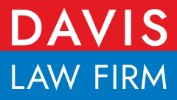Tuesday, June 16th, 2009
June 11, 2009 — U.S. Coast Guard search and rescue experts based in the Portsmouth Virginia Rescue Coordination Center assisted officials at the Rescue Coordination Center in Gris Nez, France, with the search for Air France Flight 447 by providing information and advanced technology to help locate the plane’s fuselage as well as recover passengers and crew who were lost in the crash.
The Coast Guard assisted the French authorities by applying their new, advanced SAR software system called the Search and Rescue Optimal Planning System (SAROPS) that generates optimized search area predictions for objects missing at sea. Recovery of bodies and debris is significant not only for families, but for crash investigators, said Mary Schiavo, a former inspector general for the U.S. Department of Transportation.
SAROPS includes a “reverse drift” capability, which predicts a search area based on the location where floating wreckage is found. This enables search planners to develop optimal search patterns, maximizing the probability of successfully locating search objects. By tracking information on when and where debris is found, the SAROPS system works backward using the weather, wind and sea conditions over a specified period of time to estimate a probable location of the plane. Based on this position, search efforts can be focused to find the plane’s flight data recorders.
SAROPS provides rapid and optimized search and rescue predictions by incorporating the latest real-time and forecast environmental data such as wind and currents. The SAROPS system was developed for the U.S. Coast Guard (deployed in 2007), collaboratively by Applied Science Associates (ASA), Northrop Grumman, and Metron, Inc.
ASA delivers the crucial EDS: Environmental Data Server™ component of SAROPS, which quickly aggregates and feeds meteorological and hydrodynamic conditions to the SAROPS system. In search and rescue and recovery operations at sea, the faster responders can get accurate model predictions of search areas, the greater the likelihood is of locating persons in the water and floating wreckage.
“The software is designed to minimize data entry and the potential for error, resulting in more efficient recovery than ever before,” explains Eoin Howlett, ASA’s CEO and lead for the continuing development of the SAROPS system. “The ability to access a variety of data from satellite, in-situ observations, radar, and models allows the search and rescue controller to quickly evaluate possible scenarios.”
The exact location of the crash has not yet been determined. The flight data and cockpit voice recorders also remain missing, and may lay on the ocean floor. The area of ocean where the debris and bodies have been found ranges between 19,685 and 26,247 feet (6,000 and 8,000 meters) deep. The search area covers 77,220 square miles (200,000 square km), an area nearly as big as the state of Nebraska, but so far 29 bodies as well as pieces of the jet and luggage have been recovered.
